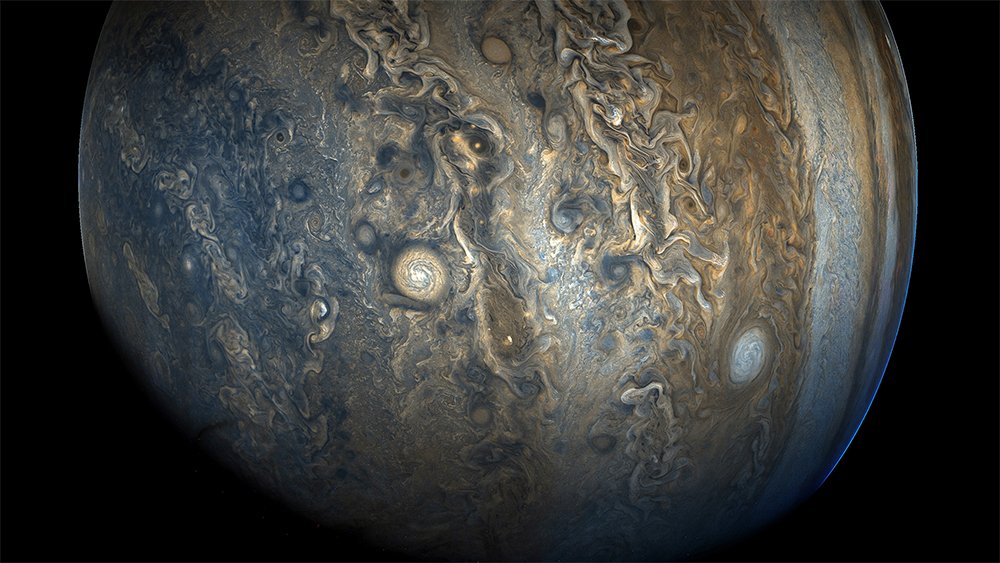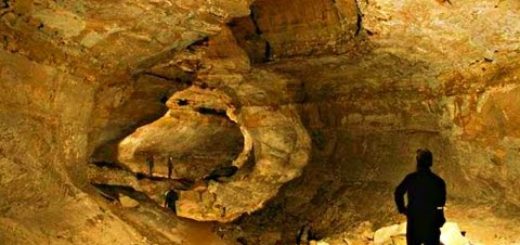A Two-Million-Year-Long Delay In Jupiter’s Growth – Explained
With an equator diameter of around 143,000 kilometers, Jupiter is the largest planet in the solar system and has 300 times the mass of the Earth. However, its formation process has never been entirely explained remaining an intensively debated subject for several decades.
Now astrophysicists from the Universities of Zurich and Bern and of ETH Zurich are able to explain how Jupiter formed. Using data collected from meteorites, they say that the growth of the giant planet had been delayed for two million years. It took place due to collisions with kilometer-sized blocks generated high energy, which meant that in this phase hardly any accretion of gas could take place and the planet could only grow slowly.

Jupiter’s southern hemisphere photographed by NASA probe Juno. (Image: NASA/JPL-Caltech/SwRI/MSSS/Gerald Eichstädt/ Seán Doran)
“We could show that Jupiter grew in different, distinct phases,” explains Julia Venturini, postdoc at the University of Zurich.
“Especially interesting is that it is not the same kind of bodies that bring mass and energy,” adds Yann Alibert, Science Officer of PlanetS and first author of the paper.
First, the planetary embryo rapidly accreted small, centimeter-sized pebbles and quickly built a core during the initial one million years. The following two million years were dominated by slower accretion of larger, kilometer-sized rocks called planetesimals. They hit the growing planet with great energy, releasing heat.
“During the first stage the pebbles brought the mass,” Yann Alibert explains: “In the second phase, the planetesimals also added a bit of mass, but what is more important, they brought energy.” After three million years, Jupiter had grown to a body of 50 Earth masses. Then, the third formation phase started dominated by gas runaway accretion leading to today’s gas giant with more than 300 Earth masses.
The research gives an explanation to the delayed growth of Jupiter. It shows that the time the young planet spent in the mass range of 15 to 50 Earth masses was indeed much longer than previously thought.
During this formation phase the collisions with the kilometer-sized rocks provided enough energy to heat the gaseous atmosphere of the young Jupiter and prevented rapid cooling, contraction and further gas accretion.
“Pebbles are important in the first stages to build a core quickly, but the heat provided by planetesimals is crucial to delay gas accretion so that it matches the timescale given by the meteorite data,” according to the astrophysicists.
Source
Research



 Creators of mankind
Creators of mankind Description of “Tall white aliens”
Description of “Tall white aliens” Where they came from?
Where they came from? About hostile civilizations
About hostile civilizations The war for the Earth
The war for the Earth “Tall white aliens” about eternal life
“Tall white aliens” about eternal life Video: “Nordic aliens”
Video: “Nordic aliens” Aliens
Aliens Alien encounters
Alien encounters The aliens base
The aliens base UFO
UFO Technology UFO
Technology UFO Underground civilization
Underground civilization Ancient alien artifacts
Ancient alien artifacts Military and UFO
Military and UFO Mysteries and hypotheses
Mysteries and hypotheses Scientific facts
Scientific facts


















